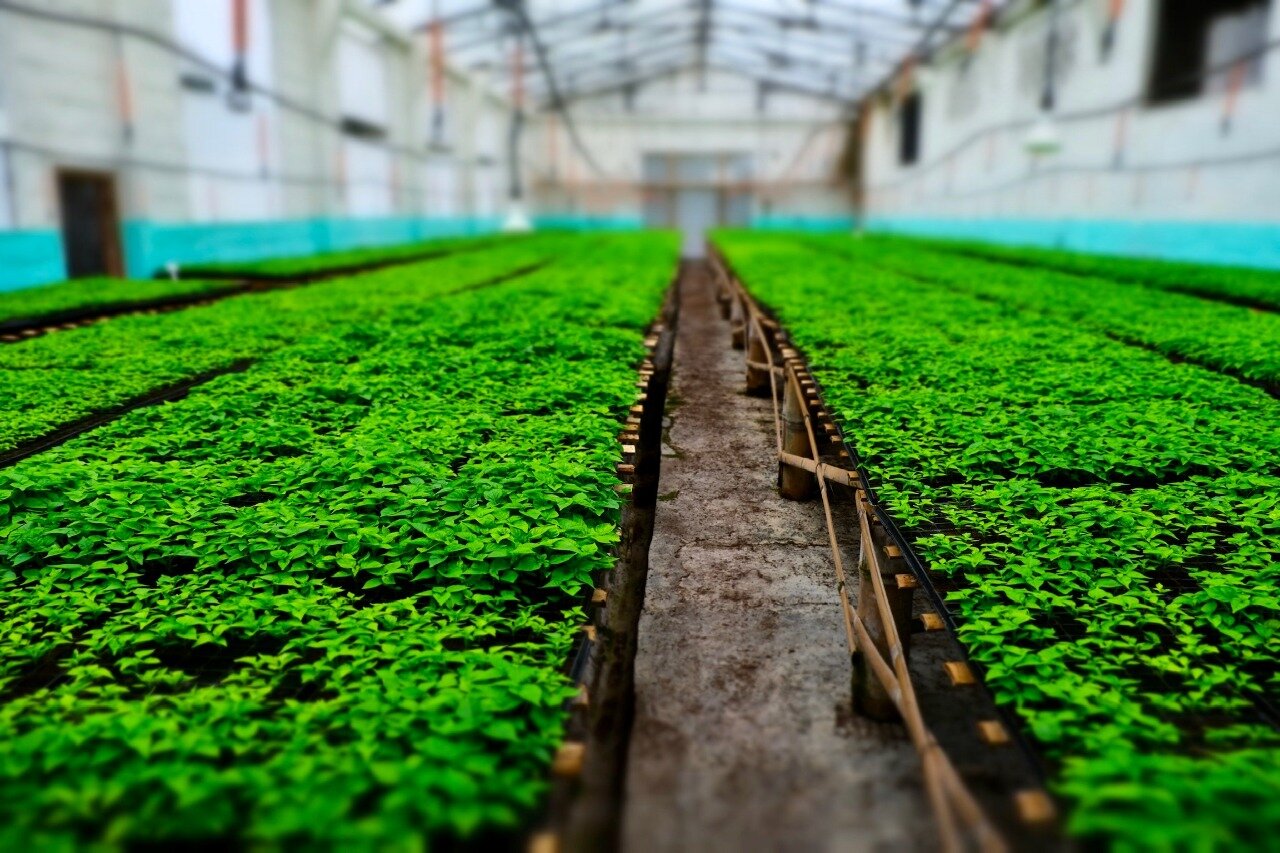A Ghost Appears: What it takes to bring a hot pepper to market
A couple of months ago, our UCHU Spice team was all abuzz when we added a new member to our pepper family: the Bhut Jolokia, commonly known as Ghost Pepper. We shared a couple of pictures with you when the pepper hit our processing line, remember? Before that, however, we had already put in a lot of work. Did you know that it takes us a minimum of 2 to 3 years to bring a new pepper to market from scratch? Here’s a sneak peek into the work we do and the importance of our agricultural programs!
The beginning: the arrival of the chili pepper seed
As things often do, it all begins with seed. You might think seeds might come in a packet or a large bag, but that is very rarely true. When seed is received by our Agricultural R&D Department, it usually is a small handful of seeds, or even just a couple seeds. Luckily, UCHU Spice has a great agronomist, Judith Luna, leading the seed bank and Seed Proliferation program.
Meet Judith
UCHU Spice’s Head of Agricultural R&D
Seed’s first photoshoot
The first step Judith takes is shooting close-up photos of the seed with a microscope. She registers these photographs, along with other info, into the UCHU Spice registry. This registry has fields like origin, taxonomy, and purpose of the seed. Some seeds are never meant for commercial functions – they are just preserved, studied, and saved in our Seed Bank.
Next crucial step: the nursery
The seeds are planted and sent to the nursery. This is the most crucial step! No seed has a 100% germination rate, and wild species are often much less likely to germinate at all. We give the seedlings in our nursery the utmost care – water, warmth, and great, controlled conditions. The seeds that germinate need around 1 and a half months until they have grown into seedlings. Then the first batch is ready to go.
From the mother plant to the first harvest
These hot pepper seedlings are planted and brought into our isolated mother plant rooms. There they will stay and grow for 4 months, until the first chili fruits appear. At this point, the registry receives more information about the plant – the size, shape, color, and other physiological qualities of the fruit are all registered. Our hot pepper mother plants will be harvested over the next 3 months. This period allows our team to verify how productive the variety is. It actually decides the hot pepper’s destiny! We evaluate if it will be a pepper we grow for commercial purposes or if it will be destined as a preservation seed.
A cozy little greenhouse
Once this is determined, the first batch of in-house seed is planted. This gives us even further insight into the germination percentages, special care needed, and so on. At least 128 units are planted – the equivalent the seedling tray we use – getting paramount care for another month and a half. After the nursery process ends, another critical observation step starts: the seedlings are planted into individual Guadua flowerpots and placed into an isolated propagation tunnel. This is the first time the small plants will face harsher conditions. Though the tunnel is still a cozy little greenhouse, the seedlings are a little more exposed to what it will be like on the outside. During this phase, we evaluate how well the hot pepper plants adapt to normal growing conditions. Next to that, we determine the caring specifics of the chili variety, such as nutritional needs, how it reacts to certain fertilizers, and so on.
4 months later it is harvest time!
The hot peppers plants finally produce fruit from which a larger batch of seeds can be extracted. The tunnel harvest takes another 4 months, after which the seed is processed and prepared for future use. Only one crucial step to take, before the batch of seeds is fully ready to go: another trial run! We do this to make sure the germination rate is the same or better than the initial germination trial.
Sneak peek into our R&D tunnels
On to the next phase! Simultaneously with the trial run, seeds are planted in much larger quantities and the matchmaking process begins. Our new hot pepper variety needs to find a home at one of the farmers’ plots in our wide network in Ecuador and Peru. By evaluating the famer’s location, soil analysis, and experience, UCHU Spice then carefully chooses the most suitable grower for the chili pepper.
Into the great outdoors
Another month and a half pass by. The large number of farmed seedlings are ready to be planted into the great outdoors. This first field of the new variety is carefully observed – we closely monitor how it reacts to outside factors and uncontrolled conditions.
Anything can happen!
If everything goes well, the first large harvests are destined for seed production again, so the hot pepper can be further propagated.
29 months later and we are finally at the end of the process. To get from a seed to a fully rescued or production variety hot pepper, a lot of time and effort is needed – and it is an arduous but rewarding process. Many of these species are disappearing due to monocultural practices and rescuing these pepper varieties is something UCHU Spice takes very seriously. We love hot peppers and want to honor heirloom varieties as well – even if it’s not to plant them commercially.
At UCHU Spice, we strongly believe we are doing tremendously important work to preserve biodiversity and keep the Capsicum genus alive, well, and varied. Find how UCHU Spice cares for peppers, people, and the planet.














